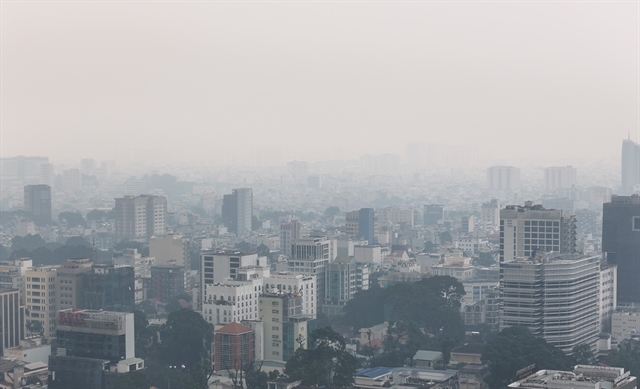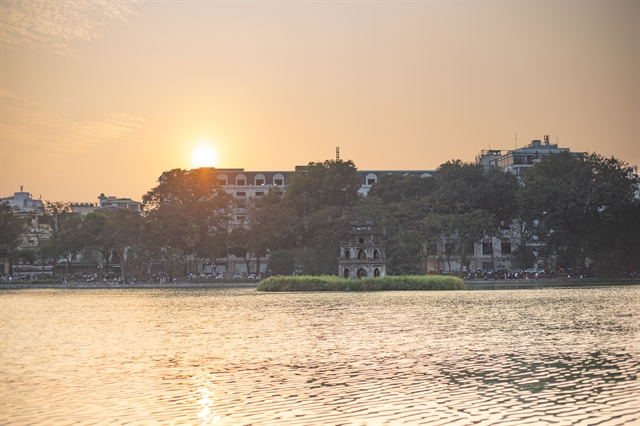 Environment
Environment


|
| Hoàn Kiếm Lake in Hoàn Kiếm District, Hà Nội. VNS Photo Anh Đức |
HÀ NỘI — The capital city's authorities plan to launch a low-emission zone (LEZ) pilot model in Hoàn Kiếm District in 2025, restricting high-polluting vehicles in a bid to improve air quality.
Under the draft resolution, which is set for reviews by the municipal council in December, specific emissions standards will govern vehicle access, with exceptions for electric vehicles and certain priority vehicles.
From 2025 to 2030, Hà Nội plans to trial the LEZ in the historic downtown district Hoàn Kiếm to assess its effectiveness and explore the potential for expansion. The plan includes banning heavy diesel trucks in the LEZ, prioritising cars meeting emissions level 4 standards, and motorcycles at level 2. Additionally, 100 per cent of new or replacement buses must use electricity or green energy, while public transport should cover 45-50 per cent of passenger transport in the LEZ.
Residents and businesses in the LEZ will have a 12-month grace period to switch to vehicles that meet the emission requirements.
From 2031 to 2035, Hà Nội encourages other districts to establish LEZs, and by 2036, mandatory LEZ measures will be required in areas affected by air pollution.
The draft resolution outlining the criteria, conditions and procedures for establishing LEZs in Hà Nội is expected to be reviewed at the city’s People’s Council meeting in December, and will take effect from January 1, 2025.
Lê Thanh Thủy, Deputy Head of the Environmental Management Division of Hà Nội’s Department of Natural Resources and Environment, had previously explained that the city’s implementation of LEZs would benefit from new provisions in Article 28 of the revised Capital Law recently approved by the National Assembly, which provides a legal basis for establishing LEZs.
According to Thủy, two main factors will determine the success of this model -- first, the Department of Transport’s programmes to restructure traffic, and second, the local government’s policies tailored to the LEZ, ensuring public support and community involvement. — VNS
The six criteria for defining low-emission zones (LEZ) 1. Located in a strictly protected area or designated low-emission area per Hà Nội’s master plan for 2030. This includes current districts as well as five upcoming districts and two new cities. 2. Frequent traffic congestion. 3. Air quality fails to meet national standards for at least one year. 4. Equipped ton enforce stricter emission standards for vehicles. 5. Clean, green energy vehicles with identifiable labels or licence plates can operate within the LEZ. 6. High community support for establishing an LEZ, with at least 51 per cent public approval. |




